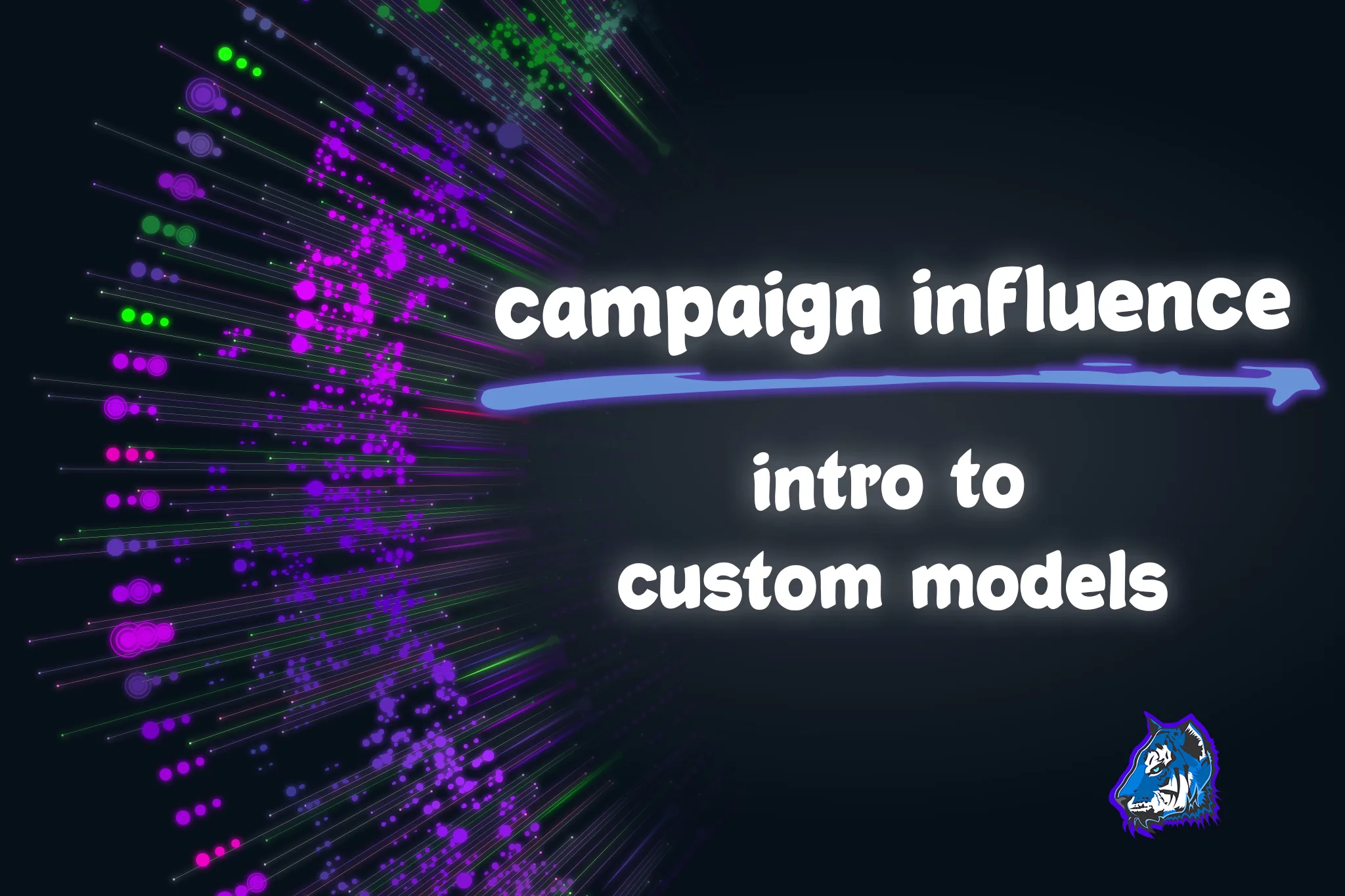Salesforce Campaign Influence: Intro to Custom Models for Campaign Attribution
In this video, we will review how to setup custom models in Campaign Influence for orgs that are not using Account Engagement (formerly known as Pardot). You will learn about 5 different campaign attribution models and how to set them up in Salesforce. This video assumes you understand the concepts and configuration we completed in our video called Mastering Salesforce Campaigns: Campaign Influence Initial Setup and Reporting.
You will learn the following:
- Types of Campaign Attribution Models
- How to Setup Custom Models in Salesforce
- How to select a default model and what makes it different
- Limits for Custom Models per org
Salesforce Resources:
Types of Campaign Attribution Models
- Primary Campaign Source Model
- This model gives full credit to the Campaign that exists in the Primary Campaign Source field on the Opportunity.
- The Campaign Influence records that are created with the auto-association settings are created with Model Name = Primary Campaign Source Model.
- One Touch Model Examples
- First Touch Model - this model gives full credit to the Campaign that was the first campaign a Contact interacted with
- Last Touch Model - this model gives full credit to the Campaign that was the last campaign a Contact interacted with.
- Pros for One Touch Models:
- Reporting is easy when we only need to look at one campaign
- Cons for One Touch Models:
- May give credit to the wrong campaign
- We know more than one campaign influences an opportunity
- Reporting will not be accurate
- Pros for One Touch Models:
- Multi Touch Model Examples
- Even Distribution Model - this model gives even credit to each Campaign a Contact interacted with
- Pros for Multi Touch Models:
- Gives credit to all campaigns
- Can see all campaigns that influenced an opportunity
- Cons for Multi Touch Models:
- Not all campaigns influenced the opportunity in the same way.
- Reporting may not be accurate since equal revenue is given to each campaign and not all campaigns should be created equally. An email click should not be weighted as heavily as a meeting at an event or trade show.
- Pros for Multi Touch Models:
- Even Distribution Model - this model gives even credit to each Campaign a Contact interacted with
- Weighted Distribution Models
- Based on Campaign Type - Allows you to give a percentage of the Opportunity revenue to the campaign based on the type of campaign.
- Allows you to weight one type of campaign more heavily than another. For example, we know a click on an email has less influence than a meeting at an event, trade show or special event dinner.
- Based on Time of Campaign - Before or After Opportunity Created Date
- Campaigns that occurred prior to Opportunity created date may have a higher weighting than campaigns occurring after the Opportunity is created.
- Based on Campaign Type - Allows you to give a percentage of the Opportunity revenue to the campaign based on the type of campaign.

How to Setup Custom Models
- Go to Campaign Influence -> Model Settings -> New Attribution Model
- Label will show as the Model Name in reporting and on Campaign Influence related lists
- Locked - this checkbox allows you to prevent users from creating Campaign Influence records. If this checkbox is not checked for the default model, users will see the New button on the Campaign Influence related list on the Opportunity page layout. If Locked is checked, then records can only be created, updated or deleted via the API.
- Campaign Influence records for custom models must be created by apex, flow or manually by a user.
How Default Models are Different from other models
Campaign influence records associated with the default model appear in three locations:
- The Campaign Influence related list on opportunities
- The Influenced Opportunities related list on campaigns
- The Campaign Statistics section on campaigns
When the default model is changed, the records that show in these locations will change automatically.
Campaign Influence records from models that are NOT the default model can be found in Customizable Campaign Influence reports only.
Limits for Custom Models
There is a limit to the number of custom models you can have in Salesforce and it is based on your edition and whether or not you have Account Engagement (aka Pardot).
- Account Engagement Plus (Pardot), Advanced, and Premium Editions: 5
- Account Engagement Growth (Pardot) Edition: 3
- Salesforce Performance and Unlimited Edition: 5
- Salesforce Professional and Enterprise Edition: 3
- Salesforce Developer Edition: 1
For any questions, comments, concerns – let us know in the comment section below!
We would love to hear from you!
